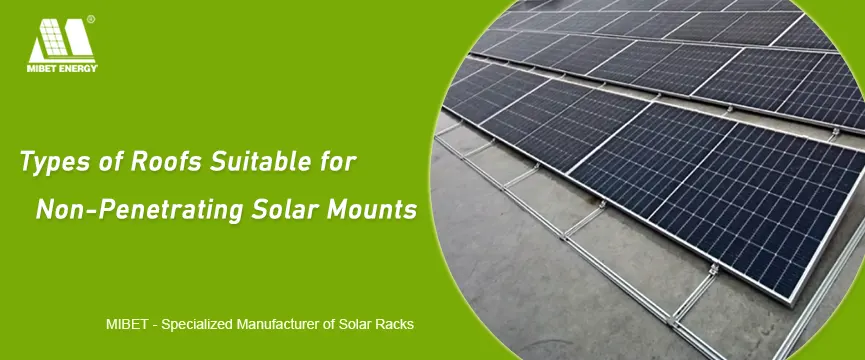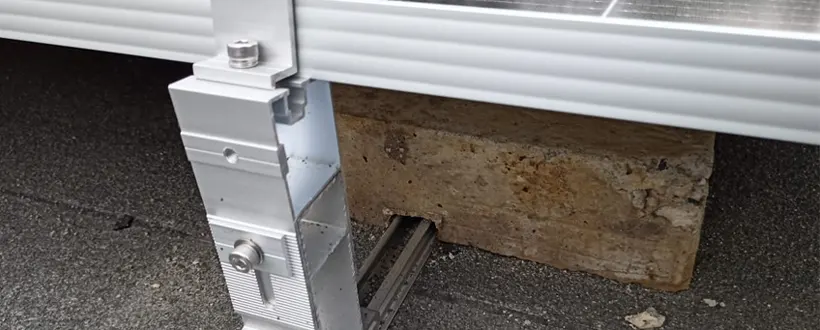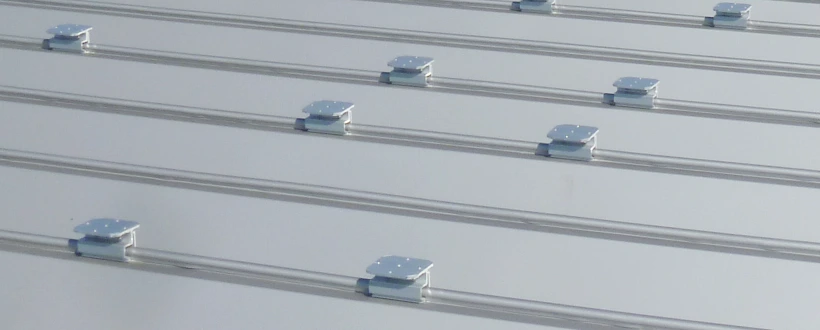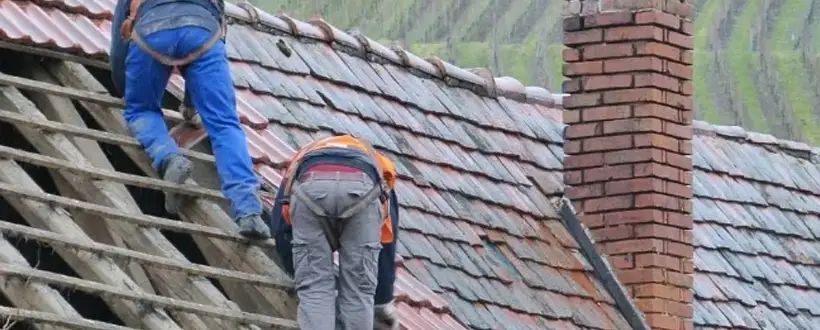- HOME
- ABOUT US
- SOLUTIONS
- Metal Roof PV Mounts and Systems
- Flat Roof Solar Panel Mounting Systems Solutions
- Tile Roof Solar Mounting Systems Solutions
- Solar Tracking Solutions for Commercial PV Projects
- Ground Solar Mounting Systems Solutions
- Floating Solar Solutions - PV Systems
- PV Solar Carport Mounting Systems Solutions
- Balcony Solar Panel Mounting Systems Solutions
- PRODUCTS
- PROJECTS
- COMPANY NEWS
- BLOG
- Contact Us

You see solar panels popping up on rooftops everywhere. It's no surprise, as unused roof space, especially on large structures like commercial buildings and distribution centers, makes an ideal location. However, installing solar panels is a significant investment, and selecting the right mounting system is a critical decision.
Solar panels require secure attachment to a robust structure capable of withstanding various weather conditions, including snow, wind, hail, rain, and even minor seismic activity. Fortunately, non-penetrating mounting systems offer a way to install panels without compromising the roof's waterproof membrane. This article will introduce which types of roofs are suitable for non-penetrating solar mounts.
Flat Roofs

You often see flat roofs on large commercial buildings like warehouses and factories. These buildings consume significant amounts of electricity. Solar power offers a financial advantage in these situations: the more electricity you use, the more money you can save by generating your own.
Ballast mounting is the most common installation method for solar panels on flat roofs. This system distributes weight uniformly across the roof, guaranteeing stability and preventing structural damage. Ballast blocks or weights secure the solar panels without requiring roof penetrations. In situations where the roof cannot handle the additional weight, mechanical attachments provide an alternative. These systems typically position the solar panels at angles of 5, 10, or 15 degrees.
To learn about MIBET's non-penetrating solar mounts for flat roofs, please click here.
Standing Seam Metal Roofs

Installing solar panels on a standing seam metal roof offers the most cost-effective solution per watt generated. This is primarily due to the lower cost of the specialized racking system. While technically requiring penetrations, the clamps used for standing seam roofs only pierce the seam itself, leaving the roofing material undamaged and maintaining the roof's integrity.
These non-penetrating clamps feature straightforward designs. You place the left and right clamp sections on either side of the standing seam and then tighten the bolts to secure them. This method avoids any damage to the roof during installation. Furthermore, some clamps eliminate the need for rails to support the solar panels, saving you money and reducing installation time.
To learn about MIBET's non-penetrating solar clamps for standing seam metal roofs, please click here.
Advantages of Non-Penetrating Solar Mounts
Non-penetrating solar mounts offer several advantages for your solar installation:
1. Roof Integrity: By avoiding penetrations, these systems eliminate the risk of compromising your roof's waterproofing during installation. This safeguards against leaks and costly repairs.
2. Efficient Installation: Pre-fabricated modules and connectors simplify the installation process, reducing labor time and costs. The systems are also easy to dismantle and relocate, making them suitable for rentals or temporary installations.
3. Versatile Application: Height adjustability allows these systems to adapt to various roof types and angles, including flat, pitched, and curved surfaces. This flexibility makes them suitable for a wide range of projects.
4. Building-Friendly: Non-penetrating systems minimize disruption to existing roof structures. This reduces potential damage and simplifies installation on established buildings.
Factors Beyond Roof Type

Even if your roof type seems suitable, these factors can influence the feasibility of non-penetrating mounts:
● Roof Condition: The roof must be structurally sound to support the added weight of the solar panels and mounting system.
● Local Building Codes: Some areas have restrictions on ballast systems due to aesthetic reasons or concerns about wind uplift.
● Roof Access: Sufficient access is needed for installation and maintenance of the system.
● Aesthetics: While less visually intrusive than penetrating mounts, ballast systems can be visible and might not be the most aesthetically pleasing option for some homeowners.
Can Glue Securely Mount a Solar Panel to Your Roof?
You might wonder if adhesives are strong enough to secure solar panels to your roof, especially when considering non-penetrating mounting options. While adhesive strength and durability are certainly critical for long-term panel performance, numerous factors influence the effectiveness of an adhesive bond. These factors include your roof type, the underlying substrate material, and the adhesive's properties.
While adhesives can be a viable option for residential solar installations in areas with mild climates, they are generally unsuitable for larger structures. The structural support and pressure required to hold a solar panel in place over an extended period exceed the capabilities of adhesives. Over time, the bond weakens, and the panel could detach from the roof.
Recommendations
Each roof type supports the weight of solar panels in its own way, and it's crucial to consult with a professional to assess your specific roof's suitability. They will check not just the material and shape of the roof but also consider aspects like the building structure, wind exposure, and local climate conditions to ensure the solar installation is secure and efficient. This approach helps you tap into solar energy without compromising the integrity of your roof.

